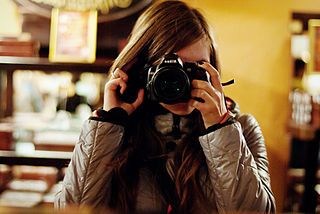From Guest Blogger Damian: How To Keep Shooting In Full Color When You’re Going Green

The US Census Bureau crunched the numbers: In 1800, we hit the one billion mark of humans milling about the Earth’s crust. By 2000, it was six billion. Come 2050, we’re projected at nine billion inhabitants of the Big Blue Planet. The numbers don’t add up for happy living. So, it’s up to the present-day person to figure out how to sustain life in the years to come.
As photographers, we can adjust our practices to be gentler on Mother Earth. The best place to start is to:
Follow the rules
And by “The Rules” I mean “Do what they’ve been teaching you since kindergarten.” Remember the green bucket in your classroom with the three little arrows on the side? Those arrows stand for reduce, reuse, recycle. This classic advice applies in the photography world too, and it gets you an awful lot closer to sustainability.
If you’re able to work exclusively with digital cameras, do it. If you can replace your boring light bulbs with awesome, curlicue light bulbs, do it. If you can buy local, use less paper, buy used products, use rags instead of paper towels, and toss everything paper, plastic, aluminum, and glass into the recycling bin, do it! The best part is that a lot of these things can even save you money! Using CFL and LED lights like we at CLJ Photography use can mean a 70% reduction in energy cost.
More on how to reduce
Reducing waste is so key when it comes to photography, I’m giving it its own section with more specific tips.
•It’s tempting to do test prints of photos, just to hold them in your hands, but wait until you know it’s a finished product to put it on paper.
•Switch over to refillable ink cartridges. I’ve used them; it’s fun to play doctor and inject new ink.
•Hopping in your car and chasing the perfect lighting through the city is a fun game, but limit your back-and-forth (unless you’re on bike or foot!) and only go to the essential locations. If the bread and butter of your photography involves traveling, invest in an Eco-friendly vehicle.
•Communication is vital when you’re running a business, but limit your interaction with your clients to email and phone calls when you can. Less paper waste means more trees still standing in the forest.
•Use timers on your cameras and lights, and if you’re not using them, just turn them off.
•Get rechargeable batteries for your equipment (and recycle your old ones.)
Green is the new black and white
It only makes sense to adopt green practices. There’s an entire bureau, the Green Business Bureau, set up to certify businesses in their green business practices. Encourage those around you to go green too, whether it be other photographers or clients. It’s as simple as reducing, reusing, and recycling! And keep innovating new ways to save on transit, materials, and energy. When you look at the numbers—9 billion people by 2050—it’s hard to ignore the fact that we need to shift our habits. So just take the shot: Go green with your photography!
